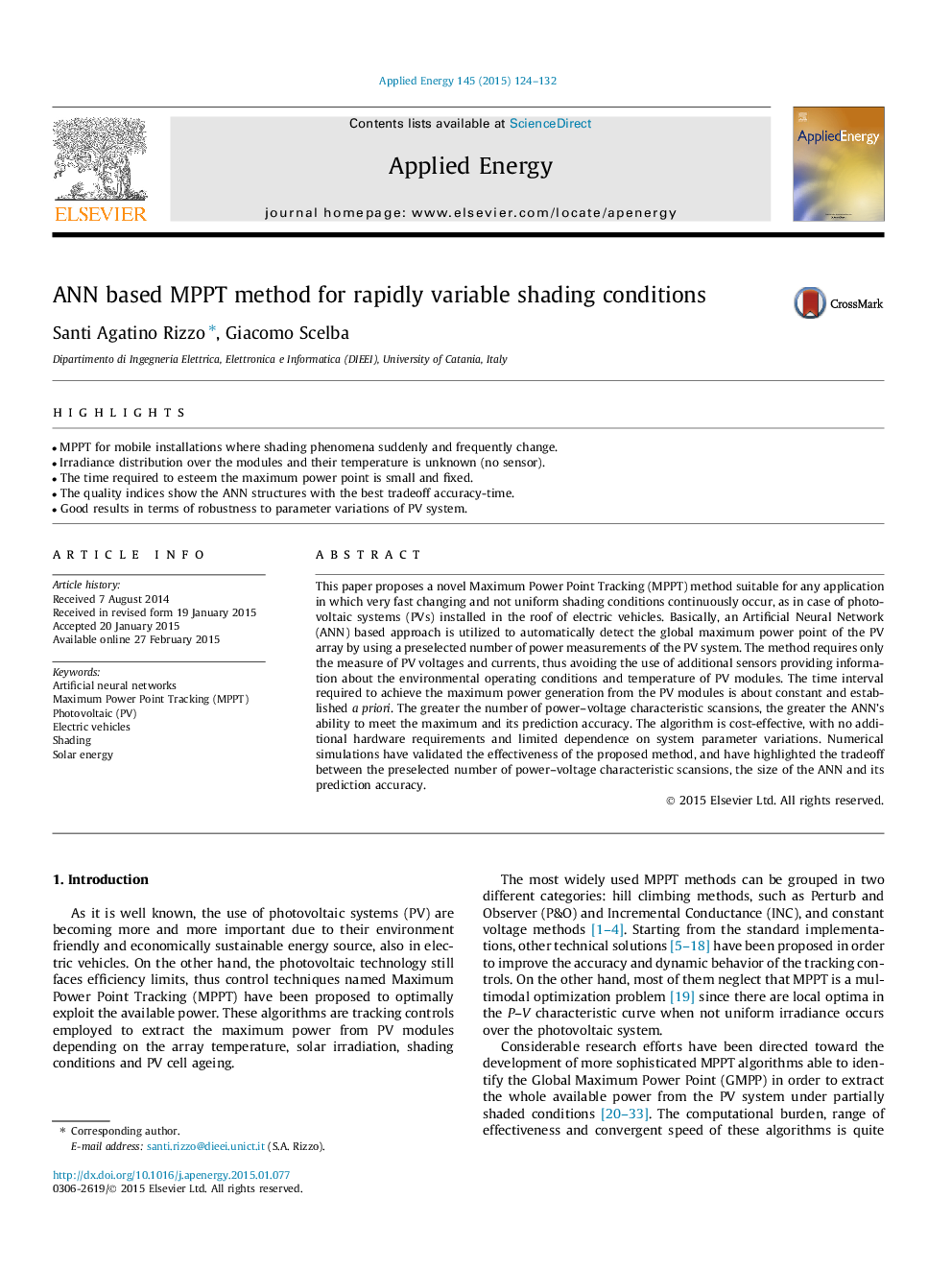| Article ID | Journal | Published Year | Pages | File Type |
|---|---|---|---|---|
| 242543 | Applied Energy | 2015 | 9 Pages |
•MPPT for mobile installations where shading phenomena suddenly and frequently change.•Irradiance distribution over the modules and their temperature is unknown (no sensor).•The time required to esteem the maximum power point is small and fixed.•The quality indices show the ANN structures with the best tradeoff accuracy-time.•Good results in terms of robustness to parameter variations of PV system.
This paper proposes a novel Maximum Power Point Tracking (MPPT) method suitable for any application in which very fast changing and not uniform shading conditions continuously occur, as in case of photovoltaic systems (PVs) installed in the roof of electric vehicles. Basically, an Artificial Neural Network (ANN) based approach is utilized to automatically detect the global maximum power point of the PV array by using a preselected number of power measurements of the PV system. The method requires only the measure of PV voltages and currents, thus avoiding the use of additional sensors providing information about the environmental operating conditions and temperature of PV modules. The time interval required to achieve the maximum power generation from the PV modules is about constant and established a priori. The greater the number of power–voltage characteristic scansions, the greater the ANN’s ability to meet the maximum and its prediction accuracy. The algorithm is cost-effective, with no additional hardware requirements and limited dependence on system parameter variations. Numerical simulations have validated the effectiveness of the proposed method, and have highlighted the tradeoff between the preselected number of power–voltage characteristic scansions, the size of the ANN and its prediction accuracy.
